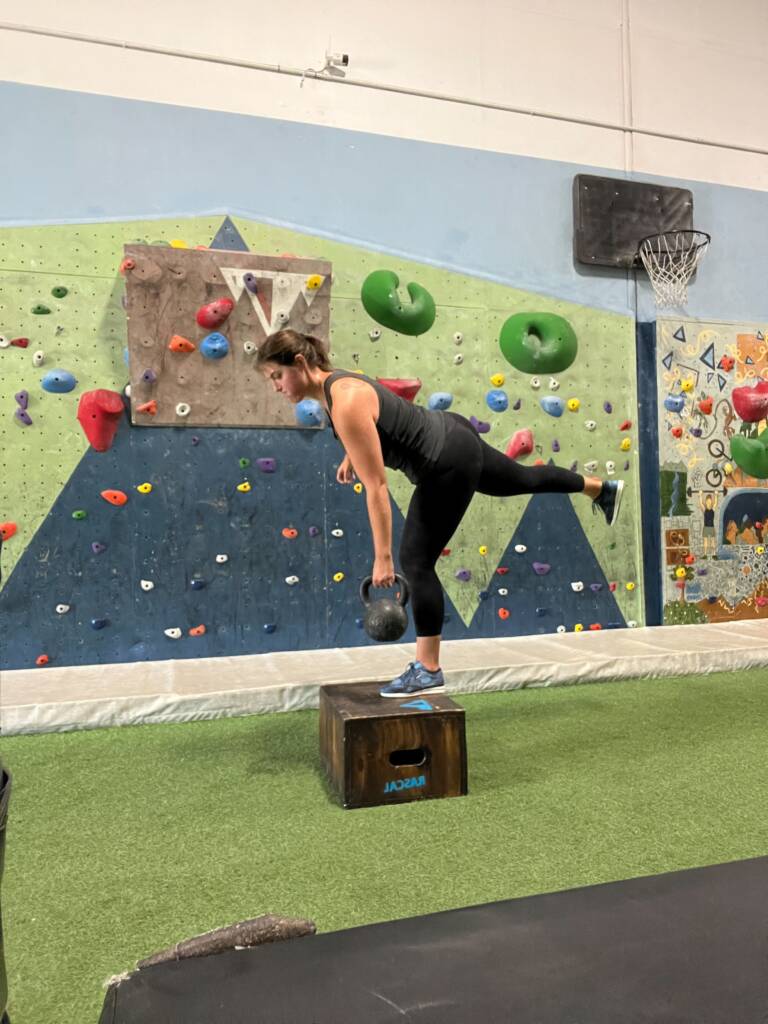Balance is one of the most fundamental — yet often overlooked — aspects of physical fitness. Whether you’re an athlete aiming for peak performance, a hobby mountaineer trying to conquer a big climb, or someone just trying to move more confidently through daily life, balance training is a game-changer. It’s not just about standing on one leg — it’s about building core strength, coordination, and stability that translates to every movement you make.
Key muscle groups that contribute to balance and stability include the core, back, shoulders, and legs. Within the core, the transverse abdominis, obliques, and pelvic floor muscles play a crucial role in stabilizing and protecting the spine and hips. In the upper body, the scapular stabilizers—located around the shoulder blades, upper back, and neck—work alongside the rotator cuff muscles to maintain shoulder and neck stability.
In the lower body, the glutes and hip abductors/adductors are essential for stabilizing the pelvis and hip joints. These muscles are especially important for maintaining balance during single-leg movements like walking and running. Though they all have separate tasks, these muscles all work together to ensure proper alignment of the body which is crucial for not only athletic activities but daily life in general.
Types of stability and balance training
Like other modalities of exercise, there are two different ways to work balance and stability muscles; static and dynamic exercises. Static exercises involve holding a position without movement. This challenges your ability to remain stable in one place. Static exercises lay the foundation to progress into advanced balance exercises by building core strength and improving muscle endurance and concentration. Dynamic exercises involve movement requiring your body to maintain balance while changing positions. These exercises improve coordination and functional fitness. Static exercises include planks, balance board holds, and standing on one leg. Dynamic exercises include walking lunges, single-leg hops, and agility ladder drills.
Give these balance training exercises a try!
Bosu ball catch
This movement is a Coach Kubi special! Not only working core and lower body stabilizer muscles, it also improves hand-eye coordination.
- Stand on one or both legs on the rounded side of a Bosu ball
- Use a tennis ball or medicine ball and play catch with a friend. If you are performing this exercise alone, try throwing the ball against a wall and catching it on the return bounce.
- If the Bosu ball is too much, start by challenging yourself by just standing on one leg on a steady surface.
Bosu ball squats
Though a squat is a pretty standard movement, adding in the use of the bosu ball adds further instability activating stabilizer muscles in the core, quads & ankles. This is a dynamic movement, but can be made into a static movement by simply doing a squat hold.
- Stand on the flat side of a Bosu ball with feet shoulder-width apart.
- Perform slow, controlled squats while maintaining balance.
Bird-dog
Even though it has a silly name, this is one of my favorite movements to practice balance and stability. This movement works the core, glutes and lower back.
- Get on your hands and knees
- Extend one arm and opposite leg
- For a static movement, simply hold at the top. To make this move dynamic, pull your knee and arm into your chest, trying to get your elbow to touch your knee.
- To level up, extend arm and leg to the side to further add instability across a different plane of motion, or add weight for an even bigger challenge.
Plank
This is a full body exercise, activating not only your core but also your shoulder and hip stabilizer muscles. A plank itself is a static movement. Make it dynamic by adding arm and/or leg movement.
- Get into a plank position
- Lift one arm or leg at a time, hold briefly at the top. Careful not to rotate your hips. Alternatively, alternate lifting an arm or leg one at a time.

How often to train balance exercise
Any amount of balance training is beneficial and will yield benefits. However, like anything, consistency is key. To see improvements with balance it is recommended to incorporate balance exercises 2-3 times a week. The whole workout doesn’t need to be dedicated to this. Personally, I like to add balance exercises that target the area of focus during my warm up. For example, if I am working on deadlifts, I will utilize time during my warm up to complete some sets of single leg tip overs with a light weight. This “turns on” my glute muscles so they are more awake during my actual deadlift sets, plus hinging on one leg works my balance.
Balance training and longevity
The saying “don’t break a hip” is tied to the older population for a reason—it reflects a real and serious risk. Stabilizer muscles are typically located around joints, helping to protect them from excessive stress. If these muscles are weak, there is an increased risk for degenerative changes such as arthritis, which then leads to bone weakness and susceptibility to fracture. According to the CDC, falls are the leading cause of fatal and nonfatal injuries among older adults. Not surprisingly, it is also proven that lower body weakness and difficulties with balance significantly increase someone’s risk for falls. Poor balance might not seem like a major issue right now, but you see how it can spiral.
It would be unfortunate to lose the ability to climb, hike, or bike due to limitations that could have been prevented. You might be surprised at how quickly your balance can improve. Whether you’re walking, lifting, or simply standing up from a chair, balance and stability greatly influence how well your body supports you. Focusing on balance training today not only helps you reach your short-term goals but also builds resilience for the years ahead.
Interested in learning about balance exercises tailored specifically to your goals? Reach out to Courtney or one of the other Summit trainers to learn more!


